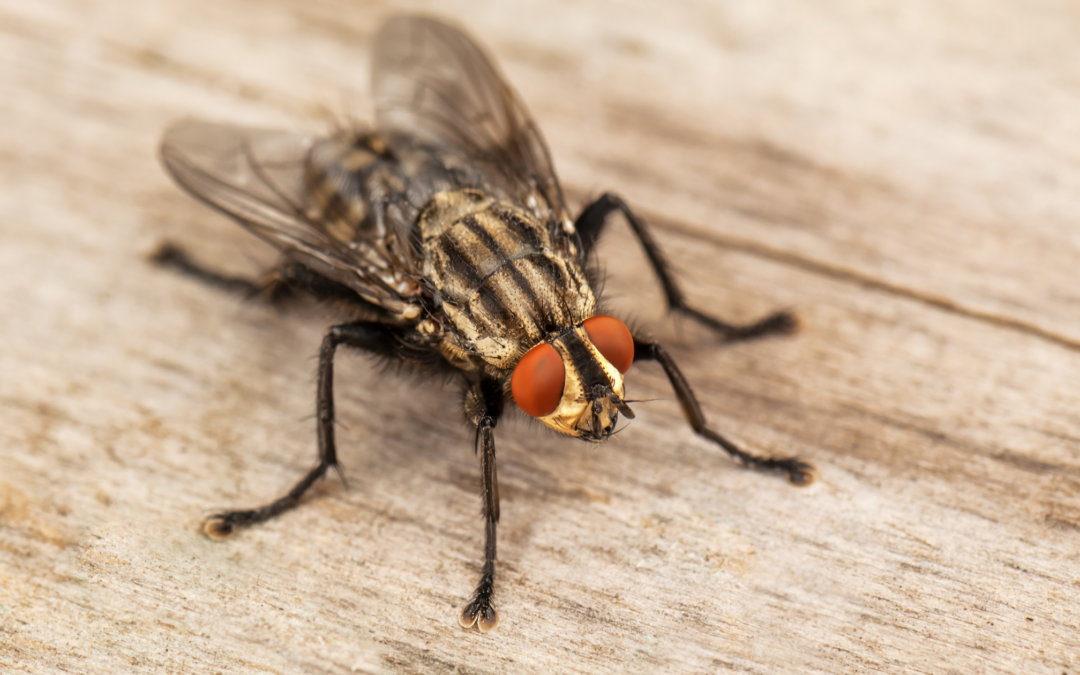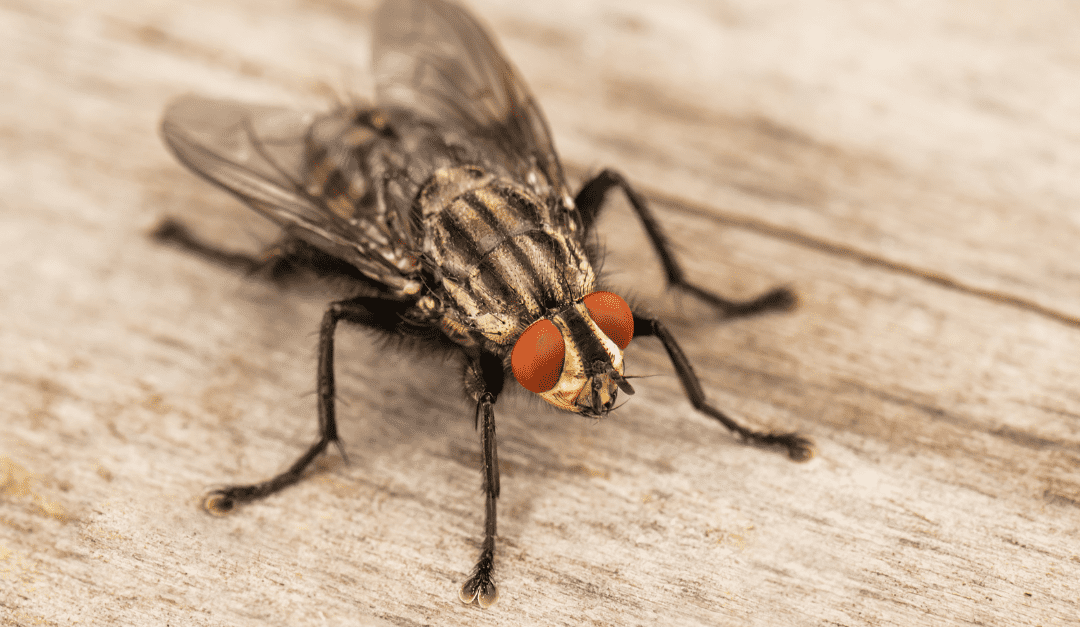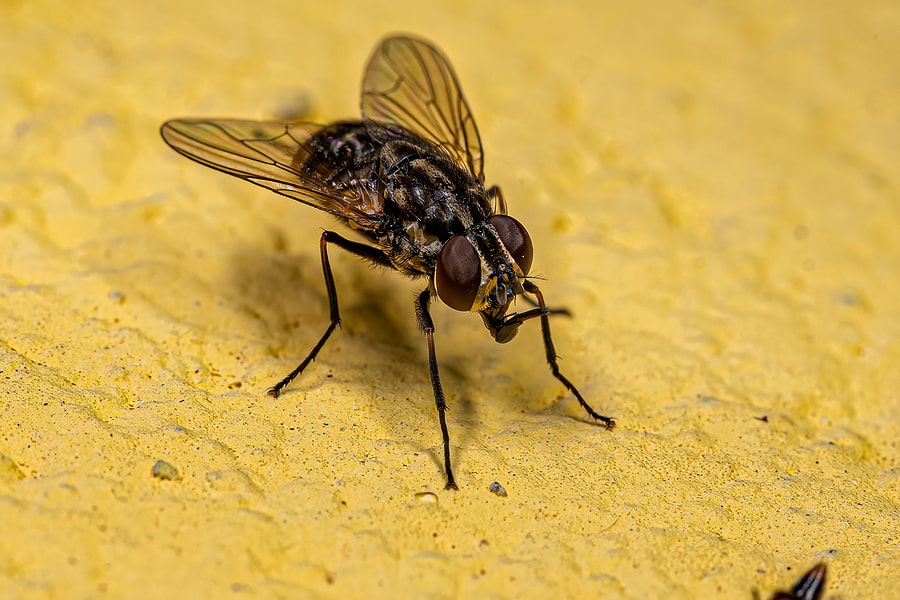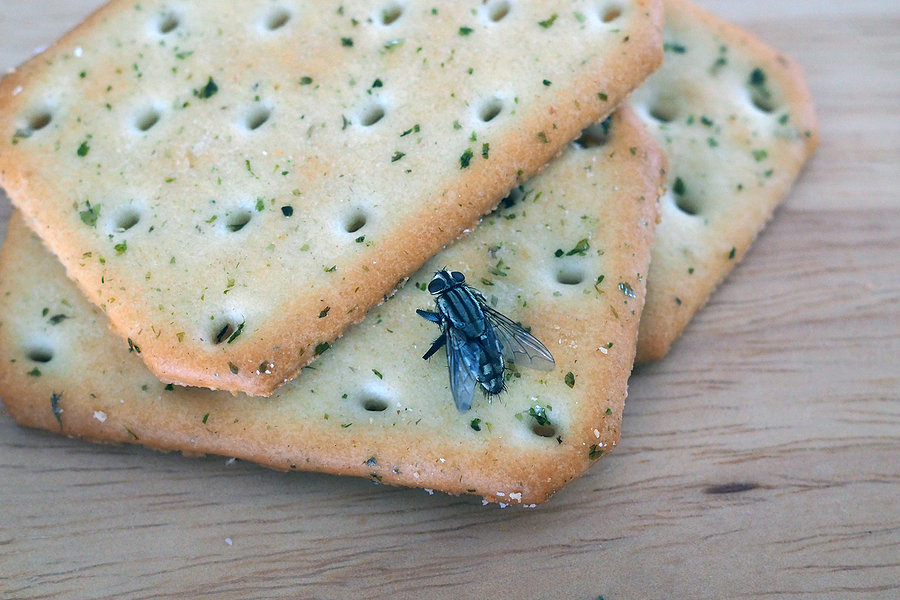READY TO GET STARTED?
REQUEST A FREE ESTIMATE
Fill out the form below or call (888) 466-7849 for a free, no-obligation estimate.

House flies are a common nuisance in homes across Georgia, often making their presence known with their incessant buzzing and quick movements. Understanding why these pests enter homes, the risks they pose, and how to prevent them can help you maintain a house fly free environment. This blog will explore the characteristics of house flies, why they infest homes, and effective strategies for keeping them out.
House flies (Musca domestica) are the most common fly species found in homes. They are medium-sized, typically measuring about 1/4 inch long. House flies have gray or black bodies with four dark longitudinal stripes on their thorax. Their eyes are notably large and compound, providing them with a wide field of vision. The life cycle of a house fly includes four stages: egg, larva (maggot), pupa, and adult. Under ideal conditions, this cycle can be completed in as little as seven to ten days, allowing large numbers to develop quickly.
House flies enter homes primarily in search of food, warmth, and breeding sites. They are attracted to a wide variety of organic materials, including food waste, decaying matter, and animal feces. Kitchens, garbage bins, pet areas, and even indoor plants can become attractive breeding sites. Flies are particularly adept at finding tiny openings in windows, doors, and vents, which they use to gain entry.
During cooler months, house flies seek warmth, which makes homes an attractive refuge. They are also drawn to the scent of food and garbage. Poor sanitation and improperly sealed entry points can exacerbate the problem, leading to an infestation.
While house flies may seem harmless, they can pose significant health risks. The house fly is known to carry and transmit a variety of pathogens, including bacteria, viruses, and parasites. House flies can contaminate food and surfaces with these pathogens, leading to illnesses such as food poisoning, dysentery, and respiratory infections. The fact that house flies frequently feed on waste materials further increases the risk of disease transmission.
In addition to health risks, house flies can be a general annoyance. Their presence can be unsettling, and they can quickly multiply, becoming a larger issue if not addressed promptly.
Preventing house flies from entering your home requires a combination of good sanitation practices, physical barriers, and, if necessary, professional pest control services. Here are some effective strategies:
House flies are more than just a minor inconvenience; they pose real health risks and can be a persistent problem if not properly managed. By understanding why these pests enter homes and implementing effective prevention measures, you can keep your living space free of flies. Remember, maintaining cleanliness, eliminating breeding sites, and sealing entry points are key steps in preventing a house fly infestation. For more persistent issues, a professional pest control company can offer comprehensive solutions.

Flies are one of the most common household pests that can be found almost everywhere in the world. They are not only annoying but can also carry a variety of diseases, including typhoid, cholera, and dysentery. Therefore, it’s important to properly identify the common types of flies in order to prevent them. In this blog, we’ll discuss how to identify and prevent different types of common flies.
The house fly is the most common type of fly found in homes. They are gray in color and have four black stripes on their thoraces. These pests are attracted to food, garbage, and feces, and can transmit bacteria and viruses that cause diseases.
Fruit flies are small, brownish-yellow flies with red eyes. They are attracted to ripening fruits and vegetables, as well as fermented liquids such as wine and vinegar.
Drain flies are small, moth-like flies that are commonly found in bathrooms and kitchens. They are gray or black in color and have hairy wings. They breed in organic matter that accumulates in drains and pipes, as well as in standing water.
By following these tips, you can enjoy a fly-free home. If you begin to see an influx of flies in your home, give your local pest control company a call for a personalized plan.

Whether inside or outside, flies can be a huge annoyance. These small pests seem to find their way back into your space after you’ve already swatted them away multiple times! At a glance, you might be able to tell what kind of fly it really is, but they can all look the same. Each type of fly has its own set of characteristics. Let’s break down the common flies you might see in your Jasper, Alabama home.
Being the most common out of all the flies, this easily identifiable pest is widespread throughout the United States. House flies can be spotted with red eyes and gray, hairy bodies. These types of flies don’t have teeth or stingers, so they feed off liquids found from human food, animal carcasses, and garbage.
While they can’t sting humans, they can spread more than 100 different pathogens including salmonellosis, typhoid, and tuberculosis. They also contaminate food surfaces by spreading diseases picked up on their legs and mouths when feeding on any trash or feces.
These oval-shaped insects are known for rapidly reproducing and can be found indoors year-round. Fruit flies are attracted to and eat rotting food; more specifically they tend to gravitate towards fruits and vegetables. They are known to breed in dark, moist areas like drains, disposals, and trashcans. They also lay around 500 eggs that can hatch in as little as 24 hours.
These pests also don’t sting or bite, but they can contaminate foods with dangerous bacteria and disease-causing pathogens.
These moth-like flies are commonly found in dark, damp conditions, like drains. Drain flies don’t bite, but their presence can aggravate asthma in some people. These household pests appear light gray to tan with a dark border around their wings.
If you have an infestation of any species of fly in your Jasper, Alabama home, then contact your local pest control company to discover a treatment and prevention plan best for you!

Flies can be considered a huge annoyance, whether you’re outside or inside the home. These pests seem to constantly find their way back to irritate you after you’ve already swatted them away a thousand times! It’s important to know that while at a glance flies can look the same, there are actually different types, each with their own set of characteristics.
House Fly
The house fly is the most common type of fly that is easily identifiable and can be found widespread throughout the United States. These pests are gray with four black stripes on their thorax with slightly hairy bodies. The house fly has red eyes that contain thousands of individual lenses that give them a wider vision. Since house flies do not have teeth or a stinger, these insects feed only off liquids found from human food, animal carcasses, and garbage.
While house flies will not sting humans, they can transfer more than 100 different pathogens including salmonellosis, typhoid, and tuberculosis. They can also contaminate food surfaces by spreading diseases picked up on their legs and mouths when feeding on any trash or feces.
Fruit Fly
Known for their ability to rapidly reproduce, fruit flies can be found indoors year-round. These insects have an oval-shaped body with six legs and antennae on their heads. These flies are attracted to and eat rotting food; more specifically they tend to gravitate towards fruits and vegetables. Fruit flies are also attracted to and will breed in dark, moist areas like drains, garbage disposals, and trashcans. They can also lay around 500 eggs that can hatch in as little as 24 hours.
While these insects won’t bite or sting, like house flies they too can contaminate foods with dangerous bacteria and disease-causing pathogens.
Horsefly
Horseflies are commonly found in both suburban and rural areas, usually near bodies of water that they use for breeding. These insects have large eyes with horizontal stripes along with their bodies. These flies are exceptionally good at flying and can travel more than 30 miles without stopping. They are most active during sunny, hot days and will typically rest on paths and roads, especially in wooded areas where they wait for potential hosts.
While male horseflies do not consume blood, female horseflies do. Female horsefly bites are rather painful since their mouthparts are used for cutting open flesh instead of sucking blood like mosquitoes. These bites are also known to cause an allergic reaction.
If you have an infestation of any species of fly, contact a professional pest control company who can provide you with the appropriate treatment and prevention plan.
If there was an award for “Most Annoying Bug” there is a good chance that the house fly would win!! House flies are the most common type of fly found in and around homes. The adults usually live between 15-25 days but when they’re flying around your head or your food…even 15-25 seconds is too long.
House flies don’t cause damage to your property and they don’t bite but they are known to transfer over 100 diseases including malaria, salmonella, and tuberculosis. They transfer diseases and contaminate our food when they land on food and other surfaces. So not only are they annoying but they are a sanitary issue too!
The best way to get rid of flies and ensure that they stay away is to keep things clean!
Preventing House Flies:
Want more information on flies? Click here!